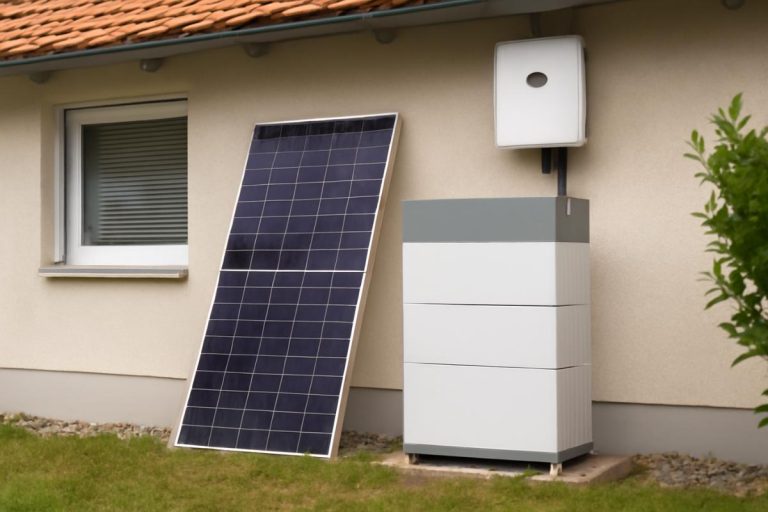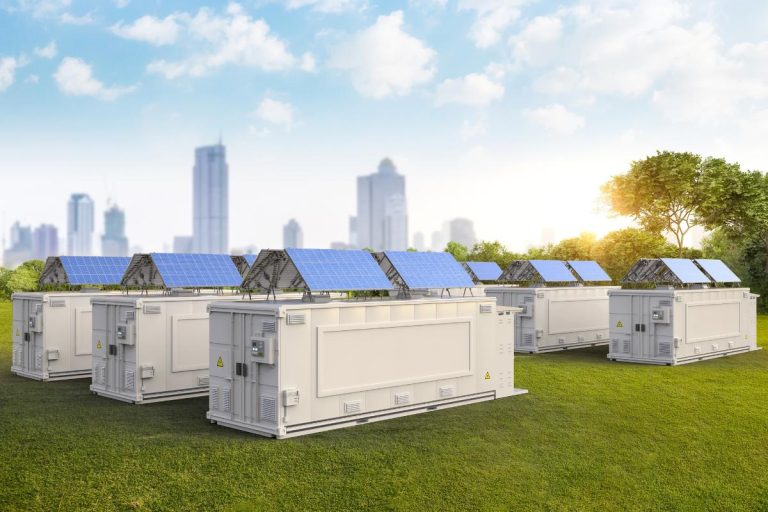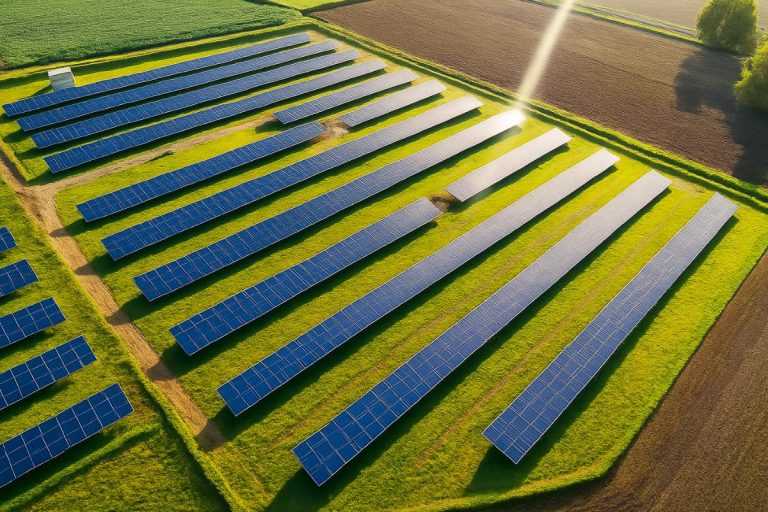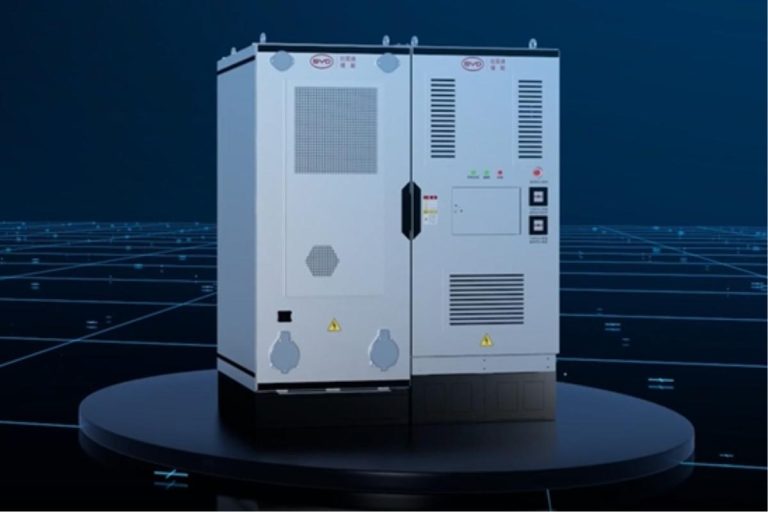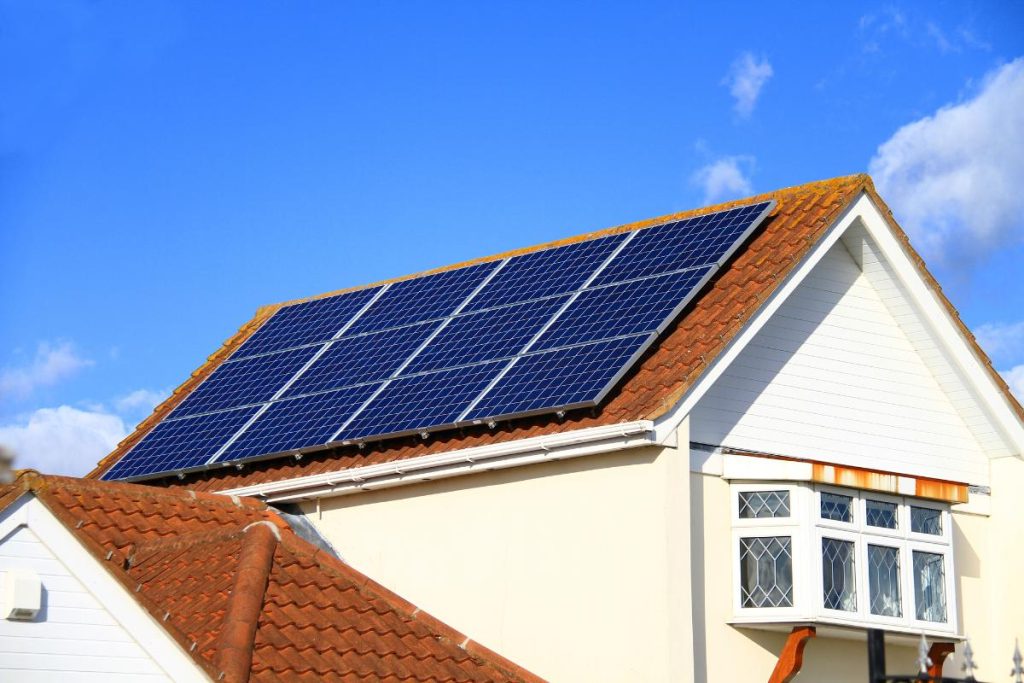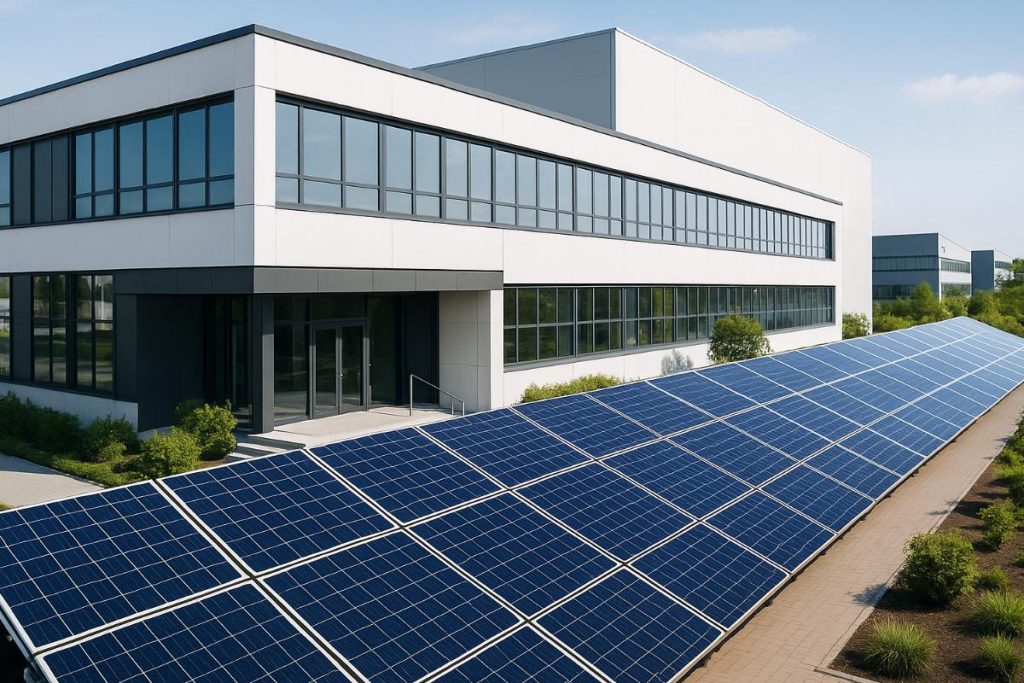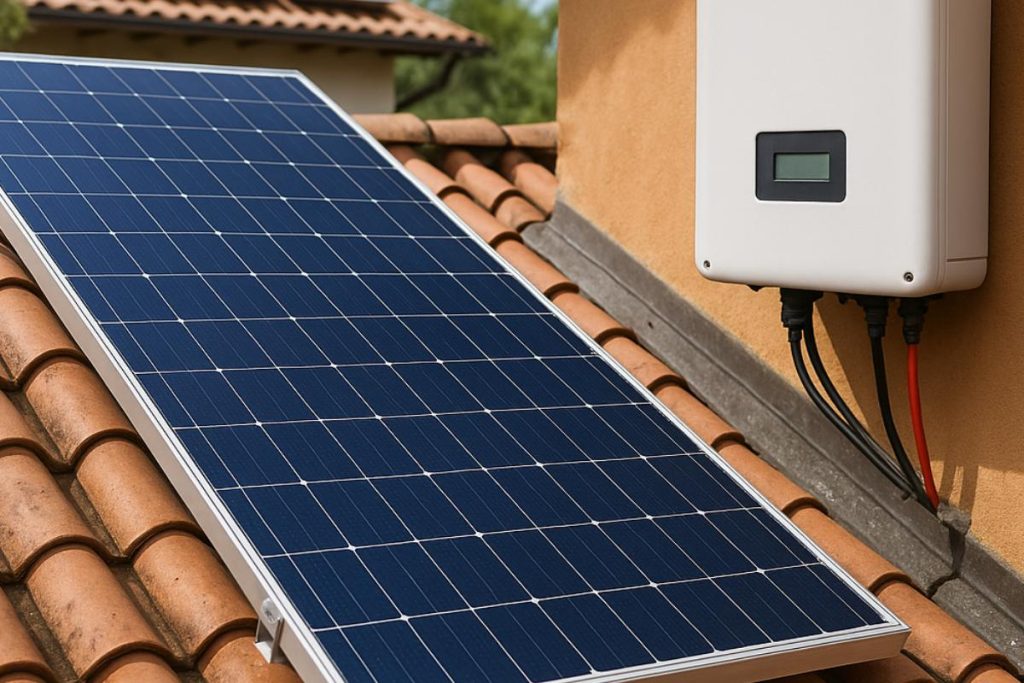Solar energy is gaining ground as one of the main renewable sources in Brazil and around the world. But have you ever wondered what happens to the energy generated and not used immediately?
That's where solar energy storageThis is an innovative and fundamental solution for ensuring greater autonomy and efficiency in solar systems.
Find out in this article how it works, what technologies are available and why investing in storage could be a strategic decision for the future.
How does solar energy storage work?
Solar energy is captured by photovoltaic panels, made up of solar cells made of semiconductor materials such as silicon.
When sunlight hits these cells, it releases electrons, creating an electric current through the photovoltaic effect. This current is converted from direct current (DC) to alternating current (AC) by an inverter, making it usable in homes and businesses.
When generation exceeds immediate consumption, the surplus energy can be directed to a solar energy storage system.
Solar energy storage, especially with battery systems, works like an energy bank. Excess electrical energy is used to charge batteries, which store this energy chemically.
When solar generation is low or nil (such as at night or on cloudy days), the energy stored in the batteries is released and converted back into usable electricity by the inverter.
This process guarantees a continuous and reliable energy supply, regardless of the availability of sunlight.
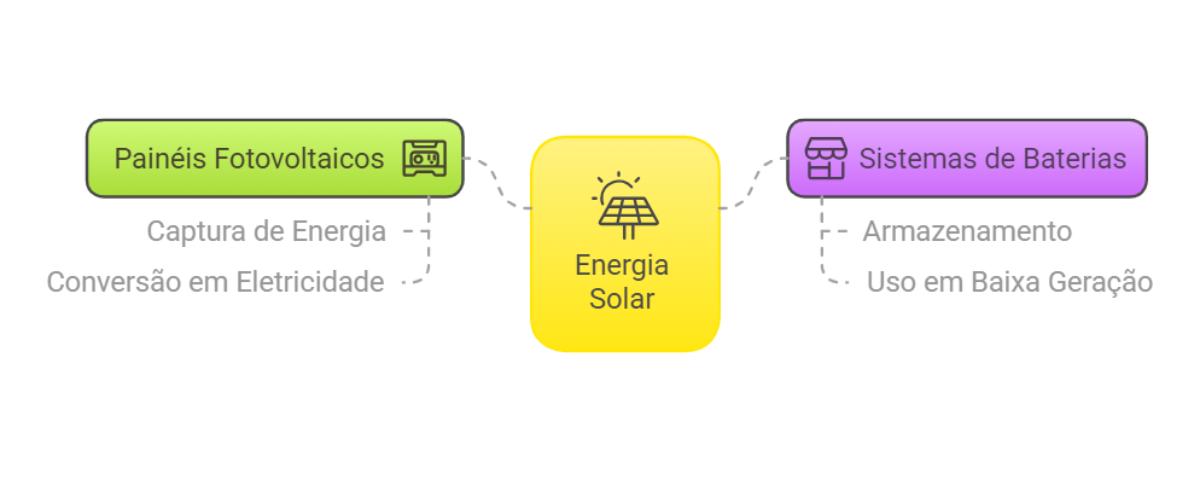
Types of solar energy storage
There are different ways of storing solar energy, each with its own specific applications and technologies. The most common include:
- Batteries: are the most common form of solar energy storage for residential and commercial systems. They store electrical energy chemically and release it when needed. Lithium-ion batteries, especially BYD's LFP batteries, are the most popular due to their high efficiency, long service life and safety.
- Thermal storage: uses heat to store energy. Heat is collected and stored in a medium, such as water or molten salts, and then used to generate electricity or heat spaces. Thermal storage is most commonly applied in industrial applications and concentrated solar power plants.
- Connected grids: although they are not direct storage systems, connected grids allow surplus energy to be injected into the electricity grid. In some cases, the owner of the system can receive credits for this energy, which can be used at a later date. This concept is known as "net metering".
Each technology has advantages and limitations. Batteries, especially BYD's advanced LFP batteries, have stood out in the market due to their affordability, flexibility and high efficiency.
They offer a scalable and reliable solution for a variety of energy storage needs, from residential systems to large industrial and utility projects.
Get to know BYD storage solutions.
Innovative energy storage technologies
In recent years, technological developments in batteries have transformed the solar energy storage market. Among the various options available, lithium iron phosphate (LFP) and lithium-ion batteries stand out as the safest, most efficient and innovative solutions for residential and business use
Background on other technologies
Although there are other battery technologies, such as lead-acid and nickel-cadmium, they present significant limitations for storing solar energy in residential and business contexts.
Lead-acid batteries, although older and more affordable, have a shorter lifespan and lower efficiency. Nickel-cadmium batteries, although durable, use cadmiumNCM batteries are a toxic material, which limits their use due to environmental concerns. NCM (Nickel-Cobalt-Manganese) batteries offer high energy density, but can still be expensive.
These technologies, while relevant in specific niches, do not offer the same level of safety, durability and sustainability as more modern options.
Lithium iron phosphate (LFP) battery: the safe and durable choice
Lithium iron phosphate (LFP) batteries are widely considered to be one of the safest and most durable technologies available. They offer:
- Superior thermal stability: LFP batteries are less prone to overheating and fires, ensuring greater safety for residential and commercial installations.
- Long life cycle: with a longer life cycle, LFP batteries can be charged and discharged repeatedly over an extended period without significant degradation.
- Environmental sustainability: LFP batteries are less harmful to the environment compared to other technologies, making them a greener choice.
These characteristics make LFP batteries the ideal choice for residential and industrial applications that require long-term reliability and safety.
BYD, a global leader in energy storage solutions, uses LFP technology in its batteries, guaranteeing high-quality products and superior performance.
BYD LFP batteries
BYD's LFP batteries are known for their safety, durability and long service life. They are ideal for applications that require high reliability and stability. Some examples include:
BYD Battery-Box Premium: This range of LFP batteries is designed for residential and commercial use. It offers high flexibility and scalability, allowing users to expand storage capacity as required.

A residential system with solar panels can use Battery-Box Premium to store energy during the day and use it at night, reducing dependence on the electricity grid and saving on electricity bills. A small business can use the system to guarantee a power supply in the event of a grid failure.
BYD MC-I (C&I): energy storage solution for commercial and industrial (C&I) applications. It offers high capacity and performance, with a modular design for easy expansion.
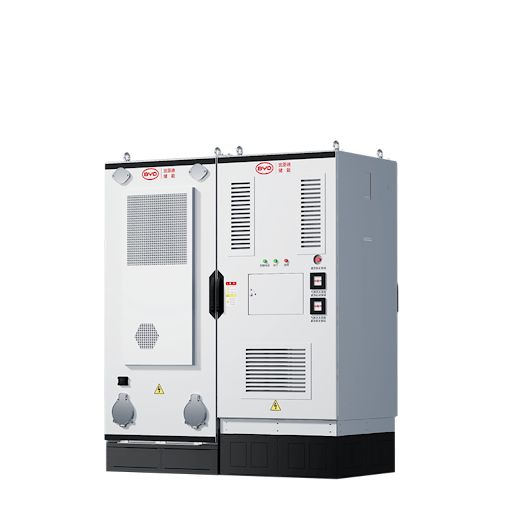
A factory can implement the BYD MC-I to store solar energy generated on its premises, using it to power its production processes during peak times or at night. This reduces energy costs and increases the sustainability of the operation.
Large-scale energy storage systems: BYD supplies large energy storage systems to utilities and large-scale renewable energy projects. These systems help stabilize the power grid, integrate renewable energy sources and provide backup power.
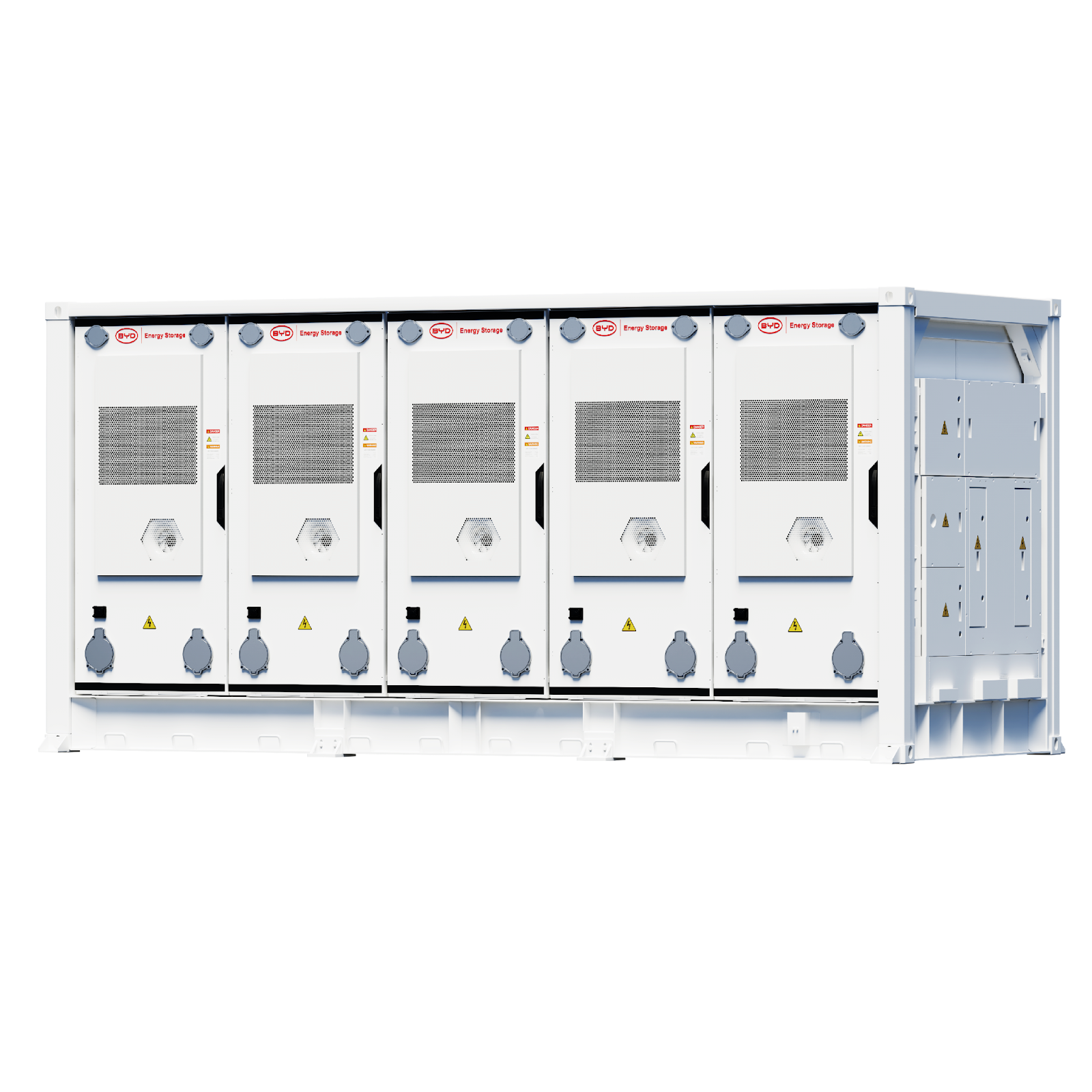
An energy utility can install a large-scale BYD storage system to balance energy supply and demand by storing excess solar energy during the day and releasing it during peak times or at night.
Lithium-ion batteries
Lithium-ion batteries are the most popular today, standing out for their high energy density and efficiency. They are used in a variety of devices, from cell phones to large energy storage systems. The advantages of lithium-ion batteries include:
- High Energy Density: They allow more energy to be stored in a smaller space, making them ideal for applications where space is limited.
- High efficiency: They offer high charging and discharging efficiency, minimizing energy losses.
- Versatility: Used in a wide range of applications, from consumer electronics to large-scale storage systems.
Despite the higher initial cost, lithium-ion batteries offer an advantageous cost-benefit ratio in the long term due to their durability and efficiency.
BYD's electric buses use lithium-ion batteries, providing clean and efficient energy, reducing air pollution and operating costs compared to diesel buses.
Benefits of energy storage
Investing in solar energy storage has a number of benefits for both the consumer and the environment. Let's explore these benefits in more detail:
Power grid stability
With storage, it is possible to reduce the impact of fluctuations in the electricity grid, preventing overloads and blackouts. In addition, battery systems act as a backup power source in emergencies, increasing the security of the electricity supply.
Reducing costs
By storing energy during peak generation periods (usually during the day), it can be used at peak times, when energy tariffs tend to be higher. This results in significant savings on electricity bills over time. In addition, storage reduces dependence on energy supplied by utilities, reducing future costs.
Learn more how much energy a solar panel generates.
Environmental sustainability
Solar energy storage contributes to a more efficient use of a renewable and clean source, helping to reduce dependence on fossil fuels. This transition plays a crucial role in decarbonizing the energy sector, reducing greenhouse gas emissions and combating climate change.
In addition, well-designed systems avoid energy waste, maximizing the use of natural resources.
Another important aspect is reducing the environmental impact related to conventional energy generation, such as the use of hydroelectric plants, which can cause damage to local ecosystems.
Find out more about the topic at sustainability: the path to a better future.
Does a grid-connected solar energy system need to be swapped for a battery system?
A common question among consumers is whether it is necessary to replace the grid-connected system with a battery system. The answer depends on the user's needs.
Grid-connected systems allow surplus energy to be sent to the utility company, acting as an energy "credit". However, for greater autonomy and safety in the event of a power outage, an excellent alternative is to consider a hybrid solar energy system.
What is a hybrid solar energy system and how does it work?
A hybrid system combines the advantages of a grid-connected system with the autonomy of a battery system. It allows you to:
- Use the solar energy generated: the solar energy captured by photovoltaic panels is used to power your home or business.
- Store the surplus: unused energy is stored in batteries for later use, such as at night or on cloudy days.
- Send the surplus to the network: if the batteries are charged and there is still excess energy, it can be injected into the electricity grid, generating credits.
- Use mains power: At times of low solar generation and when the batteries are discharged, the system automatically connects to the electricity grid to ensure a continuous supply of energy.
Rather than just retrofitting an existing system, installing a hybrid system from scratch can be a more efficient and cost-effective solution in the long term. It offers greater flexibility, security and energy independence.
It is important to note that the choice between a grid-connected system, a system with batteries or a hybrid system should be made on the basis of a careful analysis of your consumption needs, budget and energy autonomy objectives.
Check out our complete guide to solar energy.
Solar energy storage: the key to a sustainable and efficient future
Solar energy storage is key to maximizing the potential of renewable energy. By guaranteeing autonomy, stability and efficiency, it becomes an essential pillar for the energy transition.
With innovative technologies such as BYD's lithium-ion and especially lithium iron phosphate (LFP) batteries, the solar energy storage market is evolving rapidly, offering increasingly affordable and reliable solutions for homes, businesses and large projects.
BYD: Leader in Solar Energy Storage Solutions
BYD stands out as one of the leading global companies in energy storage solutions, using LFP technology to produce safe, efficient and sustainable batteries.
Our customized solutions meet the needs of various sectors, from homes with the Battery-Box Premium range to large industrial projects with the BYD MC-I (C&I) and large-scale storage systems for utilities. The reliability and durability of our batteries guarantee superior performance, making BYD a benchmark in the sector.
If you are looking for storing solar energy, increase energy capacity of your installation, or implement a hybrid solar energy systemBYD has the ideal solution for you.
Discover how BYD's solar energy storage solutions can transform your business and contribute to a more sustainable future. Find out more here with our experts and find the best option for your needs.


